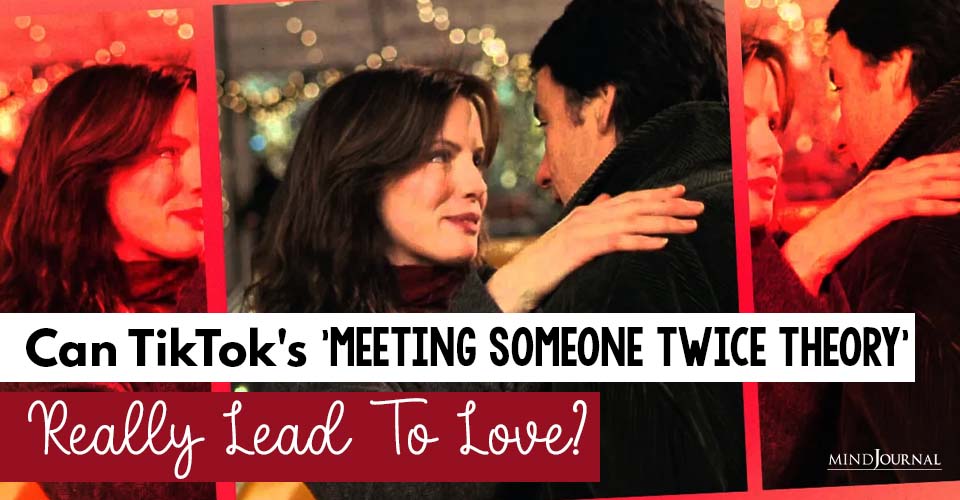Are you not being able to understand whether someone is actually flirting with you or not? Flirting isn’t always straightforward, and can sometimes be confusing. It can be a sticky spot if you turn out to be wrong either way.
Have you ever wondered to yourself, “Was that person just flirting with me?” It could be a suggestive glance, a playful remark, an ambiguous emoji, or a simple text or DM. “Hi.” Oh geez, what does that mean?!
True, the line between friendly and more than friends can be difficult to discern. You want to get it right, to avoid potential embarrassment from misreading signals but also, more importantly, you don’t want to miss out on a great new relationship if someone really is interested.
Seeing What They Want to See
First off, it is important to realize that when men and women look at the same behavior, men are likely to see behaviors as more flirtatious and seductive.1 Whether it is wishful thinking on their part or a failure to properly identify cues, men seem to have a harder time knowing if a woman is actually flirting or merely being friendly. That isn’t a recipe for success.
But perhaps men’s misperceptions aren’t entirely their fault. After all, flirting is intentionally subtle and difficult to decode. Though that may seem counterproductive for relationship formation, it’s strategic.2 Often the person doing the flirting isn’t sure whether the person they like is interested or not. By cloaking their intentions with a bit of sly and subtle flirting, the flirter can “test the waters” without being too vulnerable.
Related: 8 Signs He’s Flirting With You And NOT Just Being Nice
That’s what makes reading the signals so hard. In fact, when Jeffrey Hall and colleagues at the University of Kansas looked at how accurately people perceive flirting by having over 100 heterosexual strangers engage in conversation with another participant.3
Afterward, the researchers asked each person if they flirted during their interaction and whether they thought their partner flirted with them.
Participants accurately detected flirting only 28% of the time. A follow-up study found that outside observers who were not in the actual interaction were even less accurate. The observers’ objectivity didn’t help and only made things worse. That’s a little reassuring. It’s not like outsiders have some grand insight that you don’t have. It’s just confusing.
Seeing the Signals
If you want your flirtation detection meter to do better than 28% accuracy, the research could help. To determine what people do to show romantic interest in others, a researcher had two opposite-sex strangers meet and videotaped their interaction for 10 minutes.4 Afterward, the researcher asked each person about their romantic interest and matched it up with their behaviors during the interaction.
The focus was on laughter, but the amount of laughter itself did not indicate romantic interest. However, during laughter, males who were more interested gave off more dominance signals, e.g., taking up space, while “females communicated interest via numerous signals of bodily self-presentation and submission,” and in both, “a lack of interest was communicated through closed postures.”
A similar study gave participants the opportunity to flirt, videotaped it, and then asked participants to indicate whether certain behaviors were indeed flirting.5 Early in the interaction, behaviors weren’t related to actual interest. This suggests that the initial glances you exchange with someone probably do not hold much meaning. It’s too early to know anything for sure.
The real interest was only discernable if women kept giving signals over time. Later in the conversation, women who were interested tended to tilt their heads, use more hand gestures, and play with their clothing more. Men who were interested spent more time talking.
Those are just a few signs of women’s interest. Other researchers wanted to create a catalog of women’s flirting behavior by observing over 200 women in a singles bar.6 They identified 52 flirting behaviors. Some of the most common behaviors included smiling, glancing around the room, solitary dancing, and laughing.
Here’s the problem. These are common flirting behaviors, but they aren’t clear-cut signs of actual romantic interest. Women could simply be smiling, looking around the room, and laughing for completely non-flirtatious reasons. Subtlety reigns.
What You Want vs. What You Get
It would be a lot easier to accurately pick up on flirting if the flirters of the world were simply more direct and obvious about their intentions. Incidentally, research shows that most people prefer direct flirting.7 But would you commit to doing that yourself? Doubtful.
It ruins the intrigue, the mystery, and if you’re honest, some of the fun. If you’re not willing to be more direct, it isn’t fair to expect the same of others. In fact, research finds that how people would flirt themselves didn’t match how they hoped others would try to flirt with them.8
Related: 5 Body Language Signs Of Attraction Backed By Science
Alas, detecting flirtation with 100% accuracy is likely impossible. But, by learning a little more about the science of flirting, you may be a little more effective at sending and interpreting subtle signals.
Check out the new book of Gary W. Lewandowski Jr., Stronger Than You Think: The 10 Blind Spots That Undermine Your Relationship…and How to See Past Them, to know more about relationships, and how to handle them.
Want to know more about the science of flirting? Check this video out below!
References:
1. La France, B. H., Henningsen, D. D., Oates, A., & Shaw, C. M. (2009). Social-sexual interactions? Meta-analyses of sex differences in perceptions of flirtatiousness, seductiveness, and promiscuousness. Communication Monographs, 76(3), 263-285. doi:10.1080/03637750903074701 2. Whitty, M. T. (2004). Cyber-flirting: An examination of men's and women's flirting behaviour both offline and on the internet. Behaviour Change, 21, 115-126. 3. Hall, J. A., Xing, C., & Brooks, S. (2014). Accurately detecting flirting: Error management theory, the traditional sexual script, and flirting base rate. Communication Research, 42, 939-958. doi: 10.1177/0093650214534972 4. Grammer, K. (1990). Strangers meet Laughter and nonverbal signs of interest in opposite-sex encounters. Journal of Nonverbal Behavior, 14(4), 209-236. doi:10.1007/BF00989317 5. Grammer, K., Kruck, K., Juette, A., & Fink, B. (2000). Non-verbal behavior as courtship signals: The role of control and choice in selecting partners. Evolution and Human Behavior, 21, 371-390. 6. Moore, M. M. (1985). Nonverbal courtship patterns in women: Context and consequences. Ethology & Sociobiology, 6(4), 237-247. doi:10.1016/0162-3095(85)90016-0 7. Wade, J., Butrie, L., Hoffman, K. (2009). Women’s direct opening lines are perceived as most effective. Personality and Individual Differences, 47, 145-149. 8. White, J., Lorenz, H., Perilloux, C., & Lee, A. (2018). Creative Casanovas: Mating strategy predicts using—but not preferring—atypical flirting tactics. Evolutionary Psychological Science, 4(4), 443–455.
Written By: Gary W. Lewandowski Jr. Originally Appeared In: Psychology Today











Leave a Reply